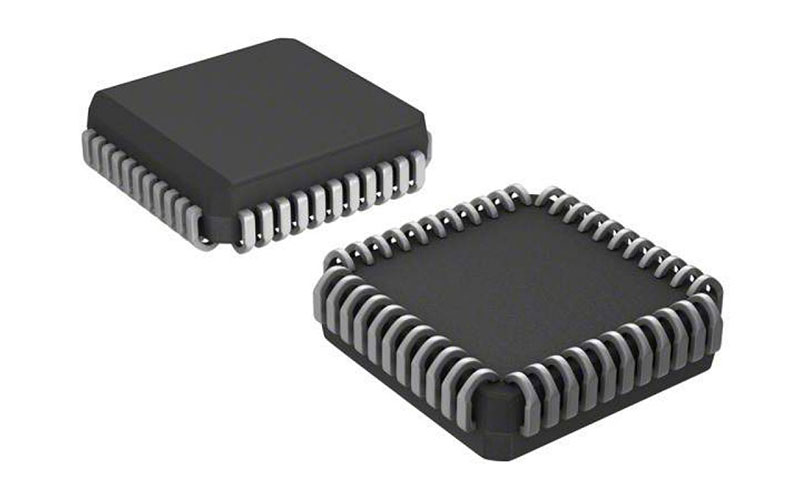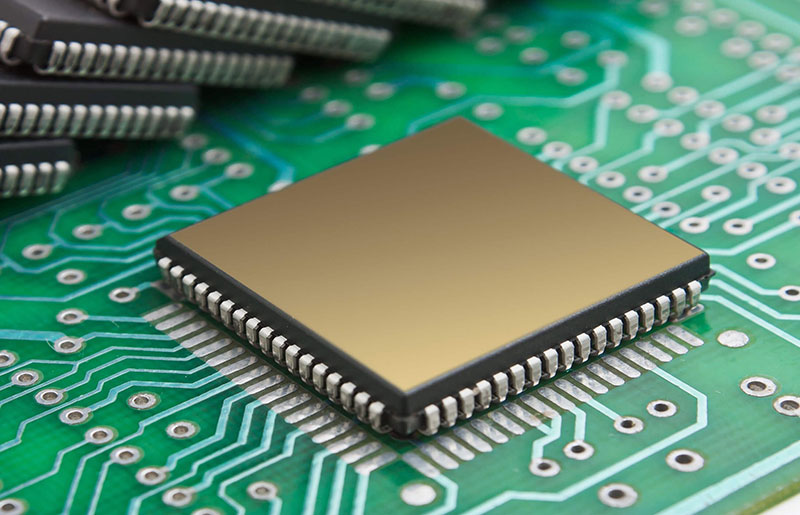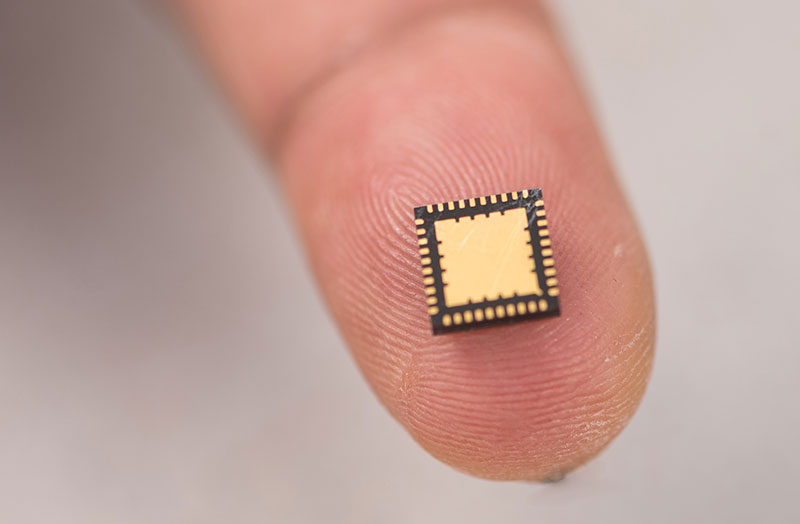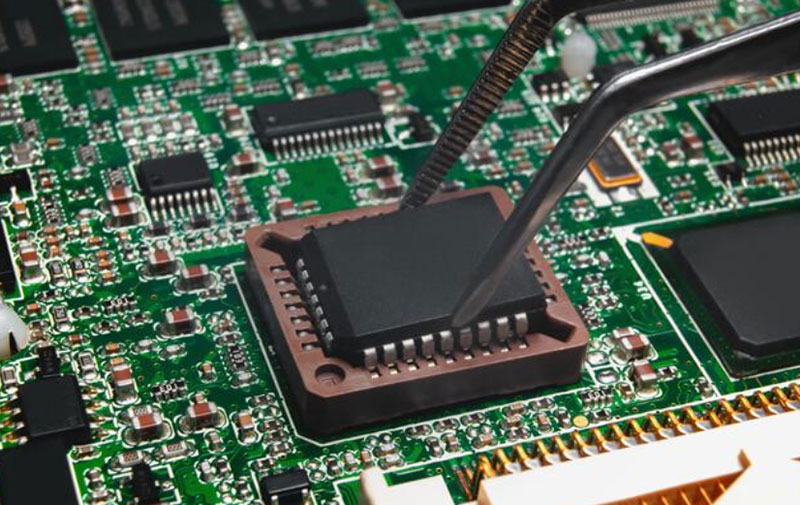What is the PLCC Package?
PLCC stands for "Plastic Leaded Chip Carrier." It is a type of surface-mount integrated circuit (IC) package that is commonly used in electronic devices.
The PLCC package has a square or rectangular shape, with leads (pins) that extend out from each of the four sides. The leads are placed in a grid formation and meant to be directly soldered onto a PCB.

PLCC packages can come in different sizes. It has a number of pins ranging from 20 to 84 or more. They are typically made of plastic and have a window on the top surface that allows for visual inspection of the integrated circuit inside.
PLCC packages have become less common in recent years, as newer IC packages such as the quad flat package (QFP) and ball grid array (BGA) have become more popular. However, PLCCs are still used in some applications, particularly in older electronic devices.
Design and Construction of PLCC Package

PLCC (Plastic Leaded Chip Carrier) packages are typically made of molded plastic and consist of a square or rectangular-shaped body with leads extending out from each of the four sides. The PLCC package is designed in a grid pattern and is meant to be soldered directly onto a printed circuit board (PCB). This information provides some design and construction details.
- Plastic body: The body of the PLCC package is made of a plastic material that is molded to create the desired shape. The plastic is typically a thermoset material, which is cured and hardened after being molded.
- Leadframe: The leads of the PLCC package are attached to a leadframe, which is a metal structure that is used to support the leads and connect them to the integrated circuit (IC) chip. The leadframe is usually made of copper or a copper alloy.
- IC chip: The integrated circuit (IC) chip is attached to the lead frame using a process called wire bonding. Thin wires are used to connect the pads on the IC chip to the leads on the leadframe.
- Mold compound: After the IC chip is bonded to the leadframe, the assembly is encapsulated in a mold compound, which is a plastic material that provides protection for the IC chip and the wire bonds. The mold compound is typically an epoxy material that is cured after being molded.
- Package marking: PLCC packages often have markings on the top surface of the package. It provides information about the manufacturer, part number, and date code. These markings are typically printed or laser-etched onto the surface of the package.
Types and Sizes of PLCC Package
PLCC (Plastic Leaded Chip Carrier) packages come in different types and sizes. They are typically identified by a part number or code. Here are some common types and sizes of PLCC packages:
- Standard PLCC: PLCC package is the go-to for many electronics developers - its square or rectangular frame makes fitting in small spaces easy and its available pin range from 20 to 84, offering a highly versatile choice of sizes.
- Miniature PLCC: The miniature PLCC package is a smaller version of the standard PLCC package. It has a smaller body size and a lower pin count, typically ranging from 16 to 52 pins.

- Thin PLCC: The thin PLCC package is a variant of the standard PLCC package that has a thinner body profile. It is commonly used in applications where space is limited, and it is available in different sizes ranging from 20 to 84 pins.
- Quad PLCC: The quad PLCC package is a variant of the standard PLCC package that has leads on only two sides. It is commonly used in applications where a higher pin count is required, and it is available in different sizes ranging from 44 to 84 pins.
- Enhanced PLCC: The enhanced PLCC package is a variant of the standard PLCC package that has a heat sink on the top surface of the package. Therefore, the heat sink helps to dissipate heat from the IC chip, which makes it useful in high-power applications.
- Ceramic PLCC: The ceramic PLCC package is a variant of the standard PLCC package that has a ceramic body instead of a plastic body. Ceramics is an ideal material to tackle extreme heat, with superior thermal performance and reliability compared to plastic. Its applications are most useful in temperatures that require a durable solution.
Advantages and Disadvantages of the PLCC Package
PLCC (Plastic Leaded Chip Carrier) packages have several advantages and disadvantages.
Advantages:
- Cost-effective: PLCC packages are a cost-effective option for various electronic applications because they are relatively cheap to produce.
- Versatile: PLCC packages are available in a range of sizes and pin counts. That makes them a versatile choice for different types of circuits and applications.
- Easy to assemble: PLCC packages are easy to assemble and mount on a PCB. Using automated equipment, which reduces manufacturing time and cost.
- Easy to inspect: PLCC packages have a window on the top surface that allows for visual inspection.
Disadvantages:
- Limited thermal performance: PLCC packages have limited thermal performance compared to other types of IC packages. Such as QFP (Quad Flat Package) or BGA (Ball Grid Array).In applications requiring high-power outputs, heat dissipation can be a huge challenge for engineers.
- Limited reliability: PLCC packages have limited reliability compared to ceramic packages. This can be a disadvantage in applications where high reliability is required.
- Limited signal speed: PLCC packages have longer signal paths compared to other types of IC packages. This can limit their signal speed performance in high-speed applications.
- Limited space for pins: PLCC packages have limited space for pins. This can be a disadvantage in applications where a high pin count is required.
PLCC Package Applications in Electronic Devices
PLCC packages, which are Plastic Leaded Chip Carriers, are commonly utilized in various electronic devices, including:
- Consumer electronics: PLCC packages are invaluable components of a variety of electronic devices, from TVs to digital cameras. Acting as protective shells for integrated circuits, these dependable little packages work tirelessly in the background to ensure proper functioning and reliable performance across diverse electronic products.
- Automotive electronics: PLCC packages are used in automotive electronics applications such as engine control units (ECUs), sensors, and lighting systems. They are chosen for their durability and reliability in harsh environments.
- Medical devices: PLCC packages are used in various medical devices such as monitors, imaging equipment, and diagnostic instruments. Medical professionals rely on their selection of products for the utmost accuracy and dependability in the most demanding applications.
- Aerospace and defense: PLCC packages are used in aerospace and defense applications. For example avionics, communication systems, and missile guidance systems. From laptops to medical devices, PLCC packages are a popular choice due to their adaptability and competitive price point. Not only are they easy to assemble, but this reliable form of packaging is highly sought after.
- Industrial equipment: PLCC packages are used in industrial equipment such as programmable logic controllers (PLCs), motor drives, and power supplies. They are selected for their high accuracy and reliability in industrial automation applications.
From laptops to medical devices, PLCC packages are a popular choice due to their adaptability and competitive price point.
Troubleshooting and Repair of PLCC Packages

Troubleshooting and repair of PLCC (Plastic Leaded Chip Carrier) packages can be challenging. Because they are densely packed with integrated circuits and have limited access to individual pins. Here are some general steps that can be taken to troubleshoot and repair PLCC packages:
- Inspect the package: Begin the troubleshooting and repair process with a careful visual assessment of your PLCC package to detect any issues or defects. This can include cracks, discoloration, or physical damage to the package.
- Test the integrated circuit: Before running your experiment, confirm that the package is in pristine condition. Then, you can tap into the potential of its intricate integrated circuit! You will need specialized test equipment that is capable of probing the individual pins of the package.
- Check the connections: the next step is to check the connections between the PLCC package and the printed circuit board (PCB). This can include checking for solder joints that may be cracked or cold, or checking for bent or broken pins on the package.
- Replace the package: If the connections are intact and the integrated circuit tests okay, but the problem persists, it may be necessary to replace the PLCC package altogether. This can be done using specialized rework equipment that is designed to remove the old package and install a new one.
- Consider professional repair: In some cases, troubleshooting and repair of PLCC packages may require specialized skills and equipment. Don't hesitate to reach out for help if you're stuck in a tricky repair situation - enlisting the assistance of an expert can save time and costly repairs.
Conclusion
In conclusion, PLCC (Plastic Leaded Chip Carrier) packages are a popular choice for a wide range of electronic applications due to their versatility, ease of assembly, and cost-effectiveness. Various devices, such as consumer electronics, automotive electronics, medical devices, aerospace and defense, and industrial equipment use them.t. However, PLCC packages also have some limitations, including limited thermal performance, reliability, and signal speed. Troubleshooting and repair of PLCC packages can be challenging, and it may require specialized skills and equipment. Nevertheless, with proper inspection, testing, and care, it is often possible to troubleshoot and repair PLCC packages successfully.




